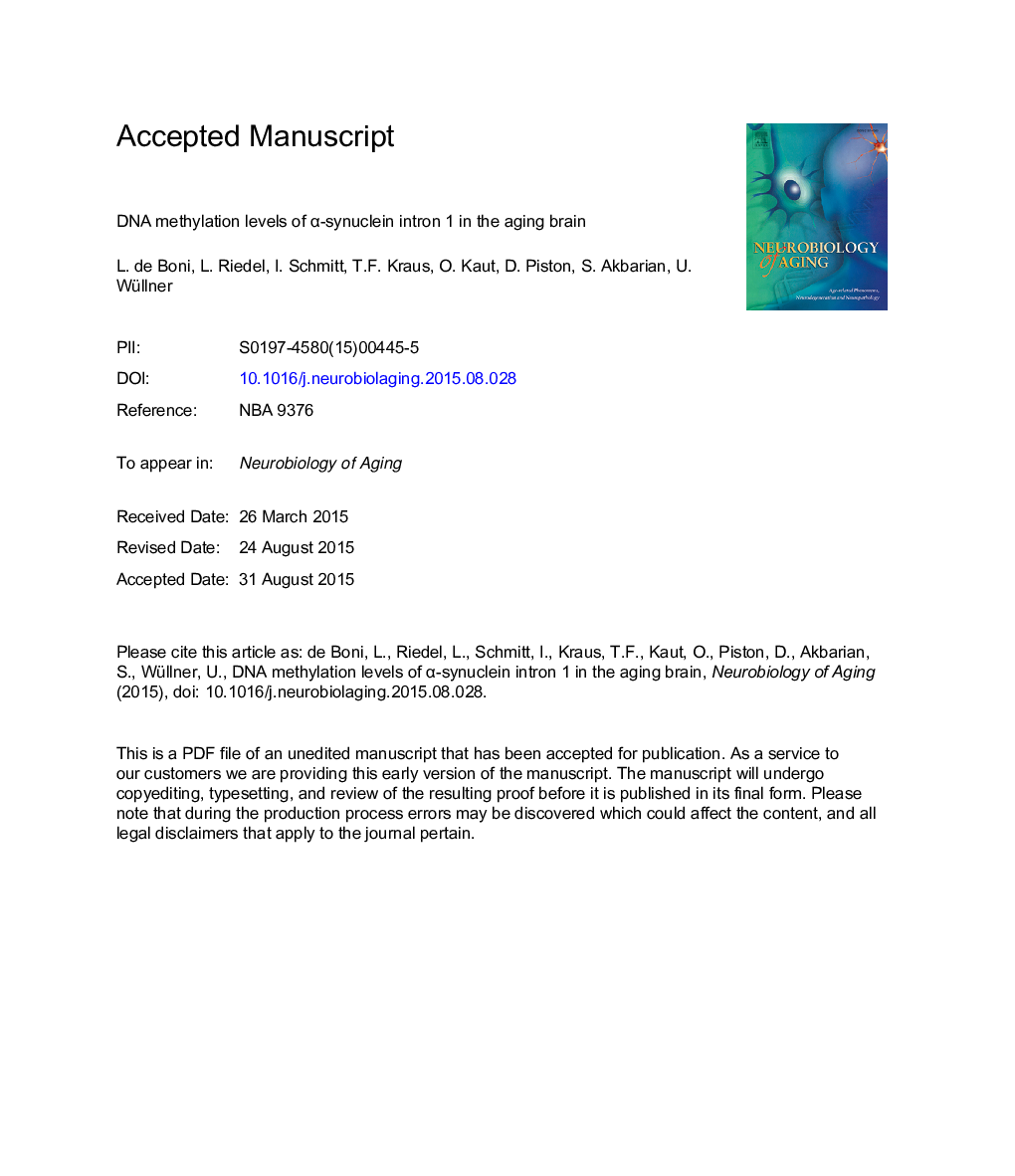| Article ID | Journal | Published Year | Pages | File Type |
|---|---|---|---|---|
| 6803796 | Neurobiology of Aging | 2015 | 16 Pages |
Abstract
DNA methylation patterns change with age, and aging itself is a major confounding risk factor for Parkinson's disease (PD). Duplication and triplication, that is, increased expression of the α-synuclein (SNCA) gene, cause familial PD, and demethylation of SNCA intron 1 has been shown to result in increased expression of SNCA. We thus hypothesized that age-related alterations of SNCA methylation might underly the increased susceptibility toward PD in later life. The present study sought to determine (1) whether alterations of SNCA intron 1 methylation occurred during aging, (2) whether the methylation pattern differed between men and women, and (3) whether purified neurons compared with non-neuronal cells exhibited different methylation patterns. The analysis of DNA from brain tissue and fluorescence activated cell sorting-sorted purified neurons of 41 individuals revealed only a minor increase of SNCA intron 1 DNA methylation levels in presumably healthy individuals during aging but no significant difference between men and women. Interestingly enough, methylation of SNCA intron 1 was higher in neurons compared with non-neuronal cells, although non-neuronal cells express lower levels of SNCA. Therefore, the normal pattern of SNCA methylation during aging should not result in increased expression of α-synuclein protein. It is thus likely that additional, yet not identified, mechanisms contribute to the tissue specificity of SNCA expression and the presumed dysregulation in PD.
Related Topics
Life Sciences
Biochemistry, Genetics and Molecular Biology
Ageing
Authors
Laura de Boni, Linda Riedel, Ina Schmitt, Theo F.J. Kraus, Oliver Kaut, Dominik Piston, Schahram Akbarian, Ullrich Wüllner,
